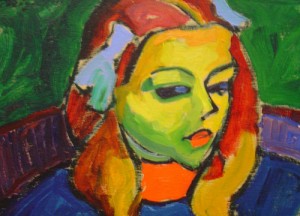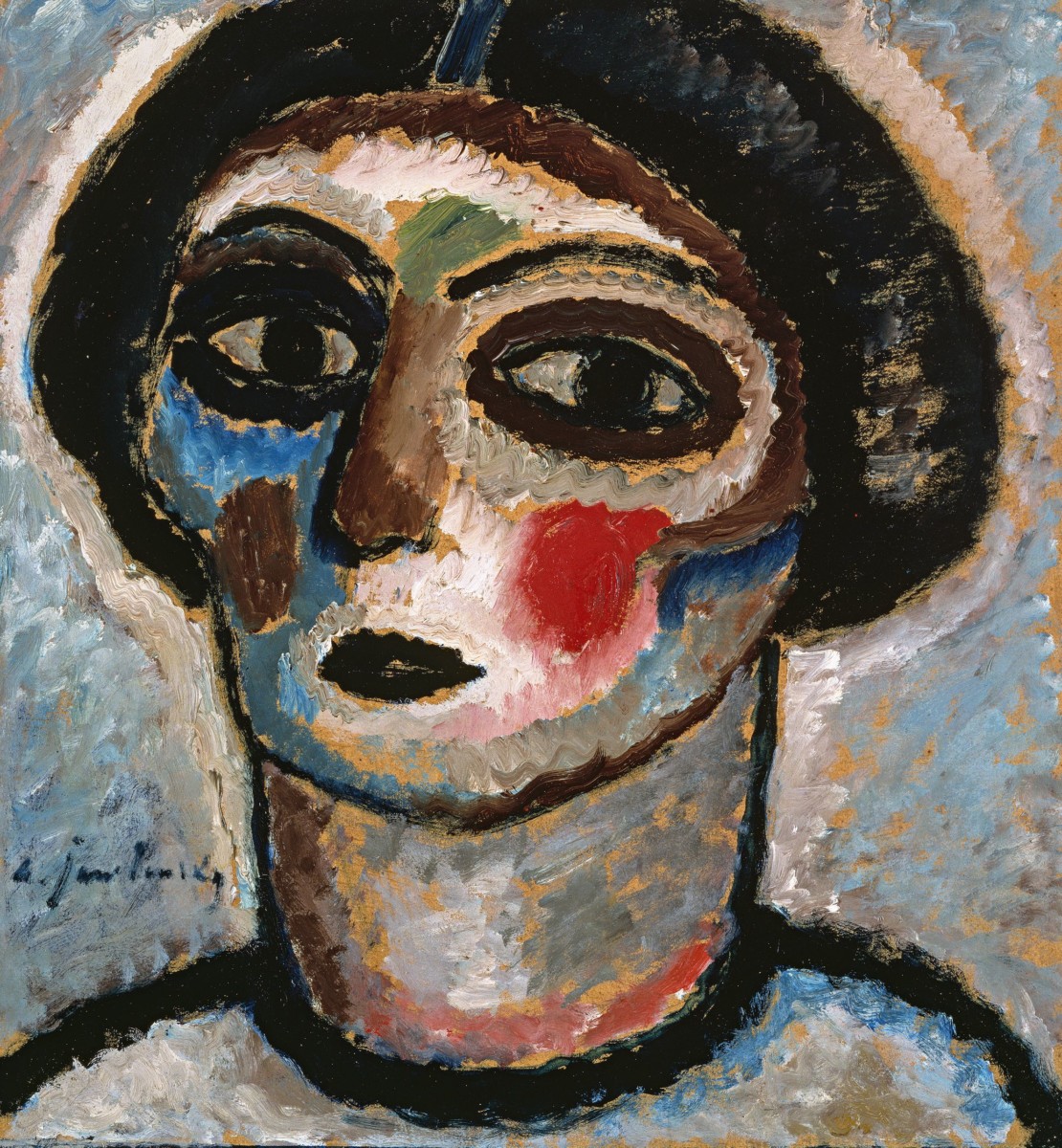“When I was young, and new to modern art, I doted on the Expressionist heads
and faces by the Russian-born artist Alexei Jawlensky, which he painted in
thick layers of clamorous color, and wondered why a bigger deal wasn’t made of them. A flavorsome retrospective of the artist, at the Neue Galerie, renews that appeal. Jawlensky was associated with a group of painters that included, most notably, Wassily Kandinsky, Paul Klee, and Franz Marc, who met in Munich around the turn of the twentieth century. Jawlensky was more a follower than an innovator, having had a  relatively late start as an artist. He was an eighteen-year-old military cadet in Moscow, committed to a career in the tsar’s army and completely ignorant of art, when he was thunderstruck by the paintings in an All-Russian Exhibition of Industry and Art. He later referred to the moment as “a case of Saul becoming Paul,” and said that, since then, “art has been my ideal, my holy of holies.” […]
relatively late start as an artist. He was an eighteen-year-old military cadet in Moscow, committed to a career in the tsar’s army and completely ignorant of art, when he was thunderstruck by the paintings in an All-Russian Exhibition of Industry and Art. He later referred to the moment as “a case of Saul becoming Paul,” and said that, since then, “art has been my ideal, my holy of holies.” […]
“I think now that what excited me about Jawlensky’s heads and faces was the glamour of a secondhand modernist zeal that was easy to identify with and to savor. With similar-looking works by Matisse or Kandinsky, I was daunted by a sense that something more, and beyond me, was going on.” […]
“Jawlensky made about a thousand of these paintings, titled “Meditations,” between 1934 and 1937, in Wiesbaden. The Third Reich had banned exhibitions of his work as “degenerate,” and he was crippled with severe arthritis, which obliged him to use both hands to wield a brush. The pictures meld his innate talents, chiefly for color, with a yearning for transcendence, which had come across as forced or sentimental in earlier work.” […]
“The spirituality was credible enough, though I eventually came to regard Jawlensky’s passion as being more about art than as being fully engaged in it: poignant rather than powerful.” […]
Peter Schjeldahl, “The Beautiful and the Unexpected,” New Yorker, February 27, 2017.
![]()

